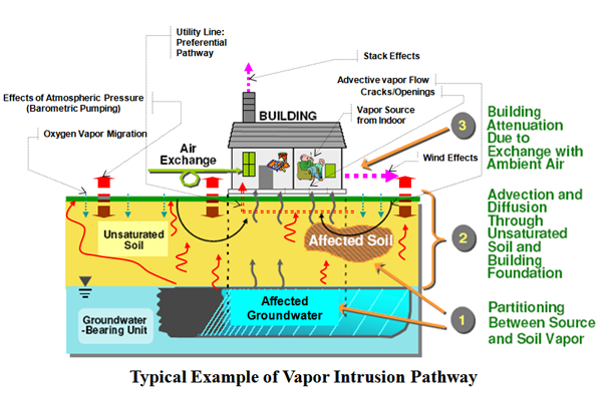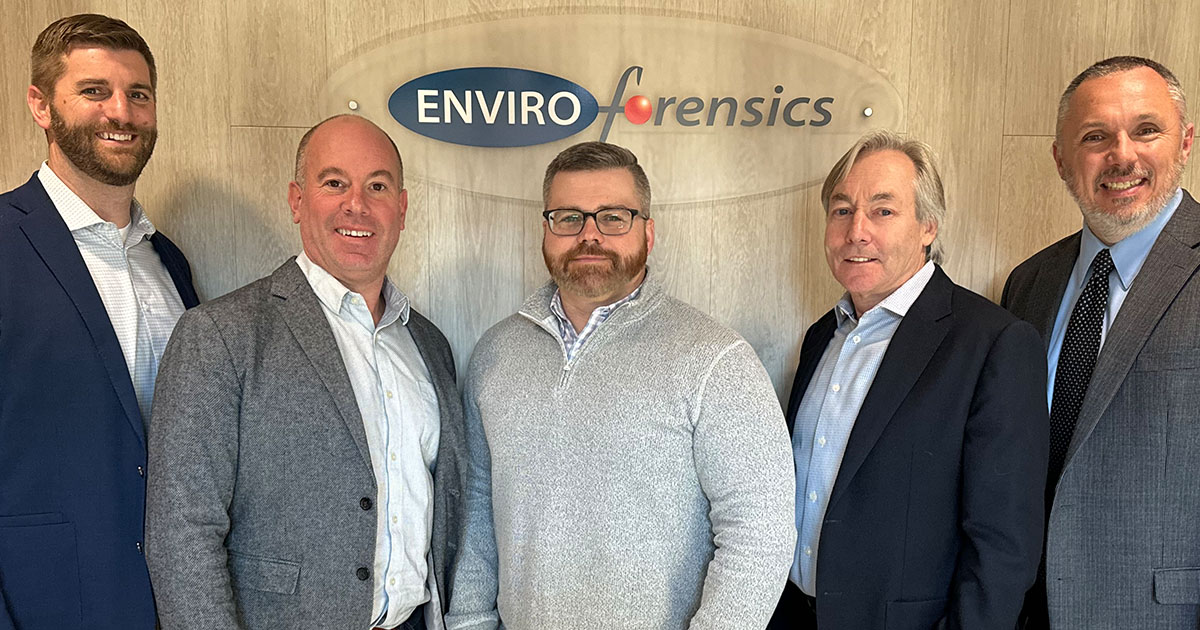Sometimes detecting and addressing a vapor intrusion pathway is like a giant game of whack-a-mole. As soon you knock one down, another one pops up, and so on and so forth. One of our teams recently encountered this issue, having discovered that their initial mitigation efforts had not decreased the concentration of tetrachlorethene (PCE) inside an apartment located above a dry cleaner. Despite this setback, our team dusted themselves off, and went back to work, going by the old addage; if at first you don’t succeed, you try again.
To give you an idea of what we were working with, our site building is a 2-story structure with a dry cleaner on the first floor, and an apartment on the second. The dry cleaner is now a drop-off only location, but had conducted on-site cleaning in the past. We discovered PCE in the sub-slab vapor underneath the structure, which helped us determine there were vapor intrusion risks to both the dry cleaner building and, perhaps more importantly, the apartment above it. We installed a sub-slab depressurization system (SSDS) to address this issue.
Unfortunately, that did not solve the problem. Indoor air PCE concentrations in both the first floor dry cleaner and second floor apartment remained above the residential vapor action level despite the operation of the SSDS. The concentrations were similar on both floors, which suggested direct physical pathways for indoor air movement. The HVAC systems that services these spaces were the most likely culprit.
Armed with this new knowledge, we focused our efforts on the first floor room that houses both of the HVAC systems. We first sealed up the mechanical room, using an air-tight door gasket and sweep. Duct work and piping penetrations in and out of the mechanical room were also sealed and a furnace filter cover was added to prevent the apartment furnace system from potentially capturing vapors from the first floor. We then installed door gaskets between the first floor store and the second floor apartment stairway. The final touch was an energy recovery ventilator (ERV) installed on the apartment’s furnace to increase fresh air exchange.
Early returns suggest this latest attempt to address the problem was successful. The first post-mitigation indoor air sample collected from the apartment did not contain PCE above laboratory detection limits. Our team will conduct a confirmation air sampling event during the upcoming winter months, when conditions will be ideal for a “worst case” air assessment.
In the Environmental Cleanup business, there really isn’t any room for failure. The preceding is a good example of the trial and error we go through when looking for all potential vapor intrusion pathways. Using the experience and ingenuity we have managing contaminations like this, we were able to come up with another solution. And, at least in the short run, it appears the residents of that 2nd floor apartment can breathe easy without having to worry about the potential health risks of exposure to PCE.




